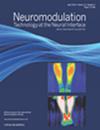刺激背根神经节的非感染性并发症:系统回顾与元分析》。
IF 3.2
3区 医学
Q2 CLINICAL NEUROLOGY
引用次数: 0
摘要
简介:背根神经节刺激疗法(DRGS)已成为一种治疗慢性神经病理性疼痛的有效方法。然而,由于现有文献主要基于病例报告、观察性研究和数据库分析,人们对其安全性和并发症尚不完全了解。本系统综述和荟萃分析旨在评估与 DRGS 相关的非感染性并发症的发生率,重点关注试验阶段、植入后阶段和修订阶段,同时确定这些结果的风险因素:本系统性综述遵循《系统性综述和元分析首选报告项目》指南,并在《国际系统性综述前瞻性注册》数据库中注册。2023 年 6 月在多个数据库中进行了全面检索。研究包括随机和非随机试验,以及涉及 DRGS 患者≥20 人的队列研究。排除标准为:未区分 DRGS 特异性并发症的研究、仅关注感染的研究、缺乏足够数据进行患病率估算的研究,或仅对大型研究进行亚分析的研究。我们对比例进行了荟萃分析,以估算并发症的总体流行率:结果:共纳入 13 项研究,634 名参与者。所有并发症的汇总患病率为 37% (95% CI: 19%-57%) ,其中与装置相关的并发症最为常见,为 27% (95% CI: 15%-42%) 。导线断裂和移位是最常见的器械相关并发症,分别为 6% (95% CI: 2%-12%) 和 6% (95% CI: 2%-10%)。手术相关并发症的总发生率为 1%(95% CI:0%-5%),其中硬膜穿刺最为常见。DRGS手术切除率为12%,主要原因是疼痛缓解不足:结论:DRGS 的安全性与脊髓刺激类似,导线移位和骨折的发生率也相似。手术技巧、技术和临床医生专业知识的改进有望减少并发症。未来的研究应规范报告实践并详细介绍植入技术,以更好地了解和完善 DRGS 植入的最佳实践。本文章由计算机程序翻译,如有差异,请以英文原文为准。
Noninfectious Complications of Dorsal Root Ganglion Stimulation: A Systematic Review and Meta-Analysis
Introduction
Dorsal root ganglion stimulation (DRGS) has emerged as a promising treatment for chronic neuropathic pain. However, its safety and complications are not fully understood, with existing literature primarily based on case reports, observational studies, and data base analyses. This systematic review and meta-analysis aims to assess the prevalence of noninfectious complications associated with DRGS, focusing on the trial phase, postimplantation period, and revisions, while identifying risk factors for these outcomes.
Materials and Methods
This systematic review adhered to Preferred Reporting Items for Systematic reviews and Meta-Analyses guidelines and was registered in the International Prospective Register of Systematic Reviews database. A comprehensive search was conducted across multiple data bases in June 2023. Studies included randomized and nonrandomized trials, and cohort studies involving ≥20 patients with DRGS. The exclusion criteria were studies that did not differentiate DRGS-specific complications, focused solely on infections, lacked sufficient data for prevalence estimation, or presented only subanalyses from larger studies. A meta-analysis of proportions was performed to estimate the overall prevalence of complications.
Results
Thirteen studies with 634 participants were included. The pooled prevalence of all complications was 37% (95% CI: 19%–57%), with device-related complications being the most common at 27% (95% CI: 15%–42%). Lead fractures and migrations were the most frequently reported device-related complications with, respectively, 6% (95% CI: 2%–12%) and 6% (95% CI: 2%–10%). Procedure-related complications had a pooled prevalence of 1% (95% CI: 0%–5%), with dural puncture being the most common. The prevalence of DRGS explantations was 12%, primarily due to insufficient pain relief.
Conclusions
DRGS shows a safety profile comparable to that of spinal cord stimulation, with similar rates of lead migrations and fractures. Improvements in surgical techniques, technology, and clinician expertise are expected to reduce complications. Future research should standardize reporting practices and detail implantation techniques to better understand and refine best practices in DRGS implantation.
求助全文
通过发布文献求助,成功后即可免费获取论文全文。
去求助
来源期刊

Neuromodulation
医学-临床神经学
CiteScore
6.40
自引率
3.60%
发文量
978
审稿时长
54 days
期刊介绍:
Neuromodulation: Technology at the Neural Interface is the preeminent journal in the area of neuromodulation, providing our readership with the state of the art clinical, translational, and basic science research in the field. For clinicians, engineers, scientists and members of the biotechnology industry alike, Neuromodulation provides timely and rigorously peer-reviewed articles on the technology, science, and clinical application of devices that interface with the nervous system to treat disease and improve function.
 求助内容:
求助内容: 应助结果提醒方式:
应助结果提醒方式:


